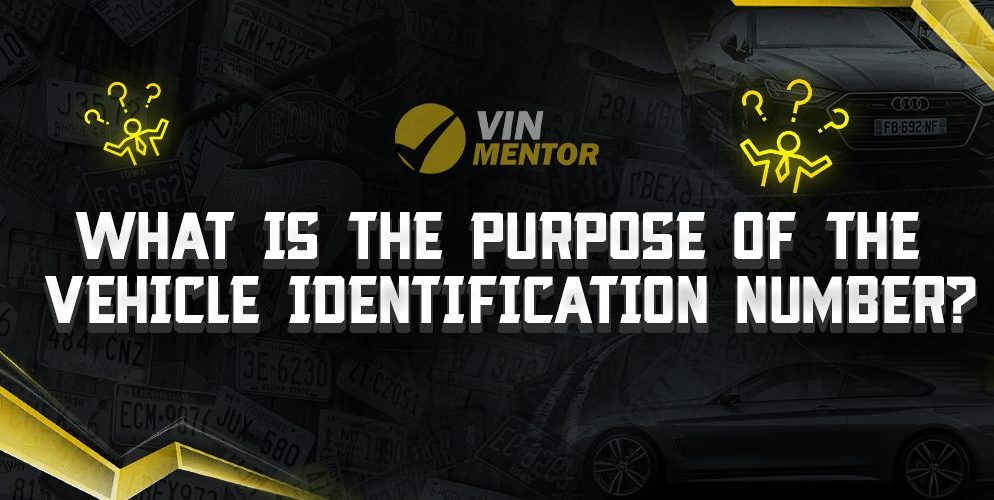

When you buy a car, you may not pay much attention to its Vehicle Identification Number (VIN). However, this combination of 17 digits holds a lot of valuable information about your vehicle. If you’re curious to know what the purpose of the Vehicle Identification Number is, read on.
Key Takeaways
- The Vehicle Identification Number is a unique code that identifies your vehicle.
- It contains information about the vehicle’s manufacturer, model, year of manufacture, and more.
- The VIN can be used to track the history of the vehicle, including accidents, repairs, and thefts.
- The purpose of the VIN is to provide a standardized way of identifying and tracking vehicles.
The Function of the VIN
The VIN is a combination of 17 characters that uniquely identifies your vehicle. It serves as a permanent identifier for your vehicle, providing important information about its history and characteristics. Here are some of the purposes of the Vehicle Identification Number:
Identifying the Manufacturer
The first three digits of the VIN indicate the manufacturer of the vehicle. This is important information for a number of reasons. For example, if you’re buying a used car, you may want to know who made the vehicle so that you can research its reputation for quality and reliability.
Identifying the Vehicle’s Characteristics
The VIN also contains information about the vehicle’s characteristics, such as its model, engine type, and transmission. This information can be helpful when you’re looking for parts or accessories for your vehicle, or when you need to know the specifications for maintenance or repairs.
Tracking the Vehicle’s History
One of the most important purposes of the VIN is to track the history of the vehicle. This includes information about accidents, repairs, and thefts. If you’re buying a used car, you can use the VIN to get a vehicle history report, which will provide information about any accidents or damage the vehicle has sustained.
Preventing Fraud
The VIN is also used to prevent fraud. By having a standardized way of identifying vehicles, it’s more difficult for criminals to alter or forge vehicle documents. This helps protect consumers and ensures that vehicles are accurately represented when they are sold or transferred.
Identification of Vehicle Type and Body Style
Apart from identifying the manufacturer and model of the vehicle, the VIN also includes information about the vehicle type and body style. This can include details such as whether the vehicle is a sedan, SUV, or truck, and whether it has two or four doors.
Facilitating Vehicle Recalls
In the event of a safety recall, manufacturers can use the VIN to identify which vehicles are affected. This helps ensure that the appropriate vehicles are repaired or serviced, and that any potential safety issues are addressed.
Compliance with Regulations
The VIN is required by law in many countries. In the United States, for example, all cars manufactured after 1981 must have a VIN. This is to ensure that vehicles meet safety and emissions standards, and to make it easier to track vehicle ownership and history.
Conclusion
In conclusion, the Vehicle Identification Number serves an important purpose in identifying and tracking vehicles. Whether you’re buying a new or used car, it’s important to know your VIN and to understand the information it contains. If you’re buying a used car, you can use the VIN to get a vehicle history report, which can help you make an informed decision about your purchase. To do a VIN check, you can choose from our recommended best VIN Check Websites list. Remember, the VIN is an important tool for protecting yourself and your investment, so don’t overlook its importance.
FAQ
How can I find the VIN of my vehicle?
The VIN can typically be found in several locations on a vehicle, including the driver’s side dashboard near the windshield, the driver’s side door jamb, or on important documents such as the vehicle registration or insurance papers.
Can I decode the VIN myself to obtain detailed information about my vehicle?
Yes, you can decode the VIN to gather information about your vehicle, including the manufacturer, model, year of manufacture, and other characteristics. Online VIN decoding tools or specific websites provide resources to help you decode your VIN.
Are there any online services that offer vehicle history reports based on the VIN?
Yes, there are several reputable online services that offer vehicle history reports based on the VIN. These reports provide information about past accidents, repairs, recalls, and other important details to help buyers make informed decisions when purchasing a used vehicle.
Is the VIN the same as the license plate number?
No, the VIN and license plate number are different. The VIN is a unique 17-digit code specific to each vehicle, whereas the license plate number is a combination of numbers and letters issued by the government for identification and registration purposes.
Can the VIN be changed or tampered with?
While it is possible for individuals to alter or tamper with a vehicle’s VIN, doing so is illegal and considered fraud. The standardized VIN system and various security measures in place help detect and prevent such fraudulent activities, ensuring the accuracy of vehicle identification and history records.












